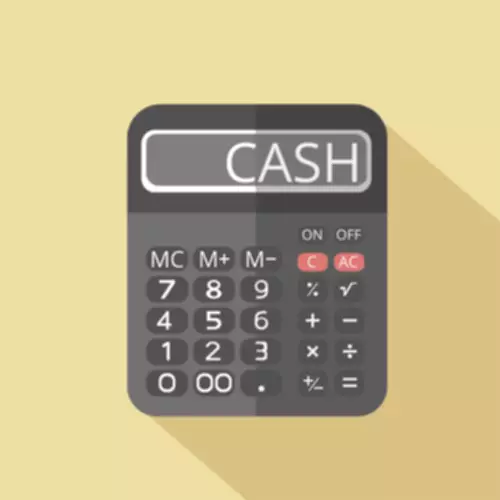What is a Schedule K1 tax form?
Content
- K-1 Form for Trusts and Estates
- How Is the Schedule K-1 for S Corporations?
- Schedule K-1 Federal Tax Form: What Is It and Who Is It For?
- Join over 140,000 fellow entrepreneurs who receive expert advice for their small business finances
- Equipment Leasing: A Guide for Small Business…
- What is a K-1 form for trust and estate beneficiaries?

The basis calculation is reported on Schedule K-1 in the partner’s capital account analysis section. Generally, if you’ve made a profit, it’s possible you’ll owe taxes. The information you need to fill out the form is in the business tax return and the financial statements. They also must present the corresponding Schedule K-1, where you need to report each shareholder’s percentage of income, profits, losses, deductions, and credits. They must file the partnership’s tax return (Form 1065, “U.S. Return of Partnership Income)” and the corresponding Schedule K-1.

For businesses that operate as partnerships, it’s the partners who are typically responsible for paying taxes on the business’ income, not the business. Each partner is responsible for filing a tax return reporting their share of income, losses, tax deductions and tax credits that the business reported on the informational 1065 tax form. As a result, the partnership must prepare a Schedule K-1 to report each partner’s share of these tax items. As part of filing their tax returns, multiple-member LLCs are required to file Internal Revenue Service (IRS) tax form Schedule K-1 each tax year.
K-1 Form for Trusts and Estates
In that case, divide the profits equally between each business partner. So, your K-1 form shows $25,000 ($100,000 X 25%) in funds from the S corporation for the year. The word ‘incorporated’ indicates that a business entity is a corporation. K-1s are sometimes confused with Form 1099s, which are tax information documents for individuals who are not employees, like sole proprietors and freelancers.
- By leveraging our mass distribution sharing tool, you can enhance investor satisfaction by providing K1s promptly and conveniently.
- If you’re running a business that’s issuing K-1 tax forms, you need to begin working with your bookkeeper and accounting staff on issuing your K-1s as soon as your tax year ends.
- Even if a partnership has not distributed any cash to the partners, the partners will be allocated their share of income or loss.
- These are payments that the partnership made to you without regard to the partnership’s income, usually in exchange for services or for the use of capital.
- The allocation of profits in a partnership is done according to the partnership agreement created by each of the partners.
- Partners and shareholders use Schedule K-1 to complete their annual tax filing, typically due on March 15 or April 15 (unless they file for an extension).
Just check this over and make sure you recognize the partnership’s name and identifying information. In other words, make sure that they sent you the K-1 for the right investment vehicle. If there are mistakes, notify the issuer and they will have to issue an amended K-1 to you. Remember, it is the owner of the partnership that fills out the K-1 and sends it to the limited partner. So if you’re the investor (limited partner), you don’t need to worry about filling out anything on this form. An important point about basis calculation is that if the partner’s basis balance is zero, any extra payments to the partner are taxed as ordinary income.
How Is the Schedule K-1 for S Corporations?
Learn how to use Schedule K-1 to report a beneficiary’s share of the estate’s or Trust’s income on your tax return Form 1040. Report any foreign taxes paid by partners over the reporting period. Enter your share of the ordinary income (loss) from trade or business activities of the partnership this year here. If you entered what is a schedule k tax form the partnership after the beginning of this year’s reporting period, you’ll enter the percentages that applied to you when you entered in the ‘Beginning’ column. If you left the partnership before the end of the reporting period, you’ll put the percentages that applied to you when you left in the ‘Ending’ column.
These forms report dividends or interest from securities or income from the sale of securities. Schedule K-1 allows partners and shareholders to report their shares of income, deductions, and credits to the IRS on their tax returns, typically via Form 1040. An exception is estates and trusts with multiple beneficiaries, who then report https://www.bookstime.com/ their K-1 forms on Form 1041. Multiple types of pass-through entities can generate a Schedule K-1. A pass-through entity does not pay income taxes directly to the Internal Revenue Service (IRS) when it files its tax return. Instead, the income or loss passes through to the partners, members, shareholders, or beneficiaries.
Schedule K-1 Federal Tax Form: What Is It and Who Is It For?
The company or pass-through entity that you are involved with must, by law, send you the K-1 either through the mail or electronically. You do not have to go get it from them – they are required to send it to you. In part two of the K-1 form, the entity has to fill out your information, as the investor. You should check all of this information and make sure it is 100% correct. You may have moved, changed addresses, etc., and it is imperative that this information is accurate. Get instant access to all of our current and past commercial real estate deals.
Investors can expect to receive a separate federal Schedule K-1 for each investment. Additionally, investors may receive a state K-1 for the state that the property is located in. Here you must add information about the company/partnership/estate. The best payroll services for small business track employee pay, calculate and file payroll taxes, offer direct deposit and provide access to digital pay stubs. Learn everything there is to know about Schedule K-1s here, as we cover the ins and outs of this important tax form that’s required if you have a Trust that generates any sort of income throughout the tax year.
Purpose of a Schedule K-1
For example, Part II (Foreign Tax Credit Limitation) includes two sections, and Part III (Other Information for Preparation of Form 1116 or 1118) includes five sections. The deadline will be different if your company operates on a fiscal year. Report any other information here using the codes on page 2 of Schedule K-1 and the instructions to Schedule K-1.
What is Schedule K for?
The Schedule K-1 is the form that reports the amounts that are passed through to each party that has an interest in an entity, such as a business partnership or an S corporation. The parties use the information on the K-1 to prepare their separate tax returns.
This section is all about long-term gains or losses you sustained this year. For a detailed breakdown of which gains qualify as short and long term, see this guide from the IRS. To fill out boxes 11 and boxes 13 through 20, you’ll need to use the codes located in the instructions of the Schedule K-1 form. A recourse debt is a debt that holds the borrower personally liable (which means a lender can go after your property), while all other debt is considered nonrecourse. For more information about the difference, see the IRS’s guide to recourse debt and the instructions to Schedule K-1.
Join over 140,000 fellow entrepreneurs who receive expert advice for their small business finances
Income generated from partnerships is added to the partner’s other sources of income and entered on Form 1040. If you use tax software for your personal taxes, follow the prompts to enter details from your Schedule K-1 for the appropriate business entity. If you use an accountant, be sure to provide them with copies of your K-1 so that they can prepare your final personal tax return.
With partnerships, each partner must report their share of income, losses, deductions, and credits as filed on Form 1065. Based on informational Form 1065, the business must distribute Schedule K to each partner to show their individual share. A K-1 tax form is commonly issued to taxpayers who are partners in a business or have invested in financial products like limited partnerships (LPs). LPs are a common structure for hedge funds and private equity fund vehicles. Other investments where you may receive a K-1 form include exchange-traded funds (ETFs). The new schedules are intended to provide more transparency and clarity for the owners of pass-through vehicles regarding how to calculate their US income tax liability from relevant international items.
You must issue K-1s to your partners or shareholders on or before the deadline of the partnership or S corporation’s tax return. For calendar year businesses, this falls on March 15 or in September, if you’ve filed for an extension. This typically leaves recipients a month to use the information from the K-1 to file their taxes. If you’re starting a business partnership for the first time, you may be asking, What is a Schedule K-1 form for taxes? Also known informally as a K1 form, a Schedule K-1 is a federal tax document that the IRS requires of partnerships. Two or more partners use a Schedule K-1 to report their share of profits, losses, and dividends.
